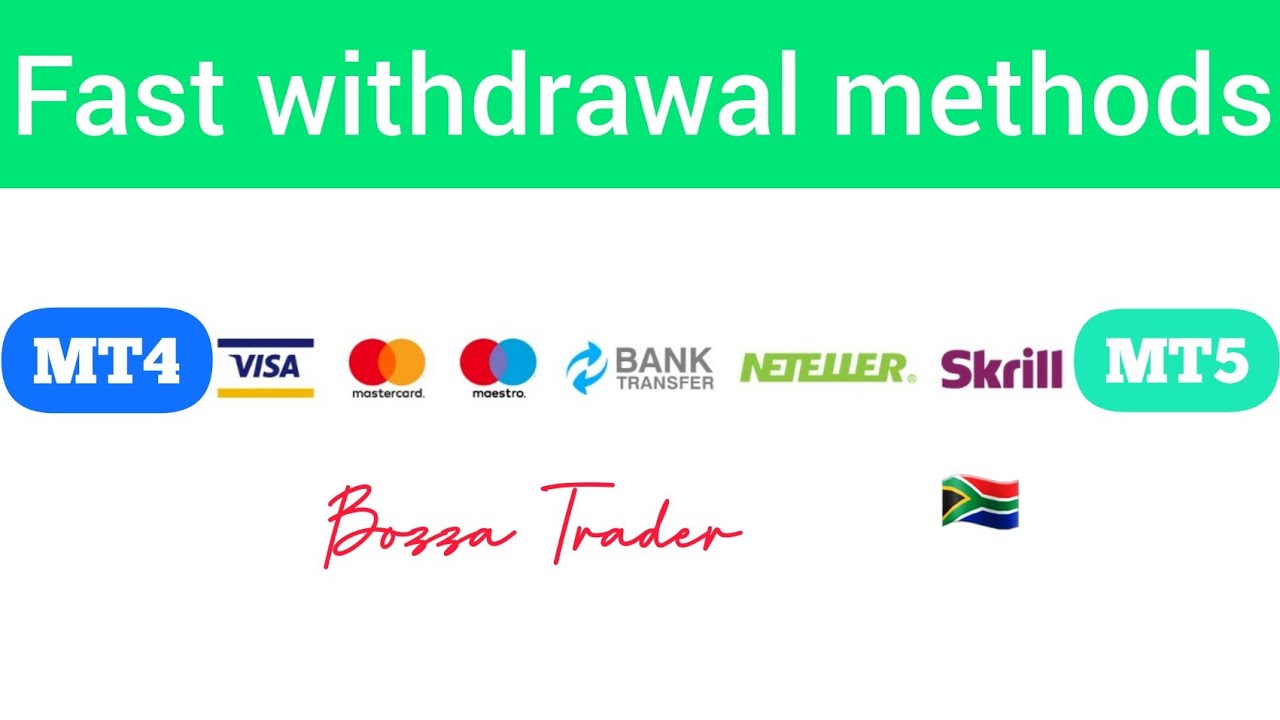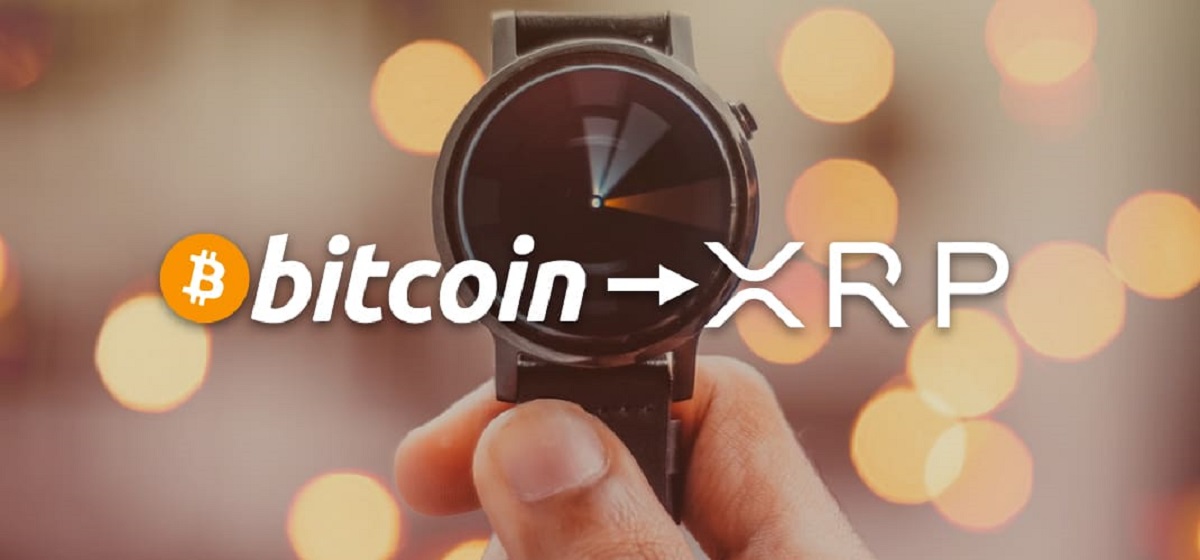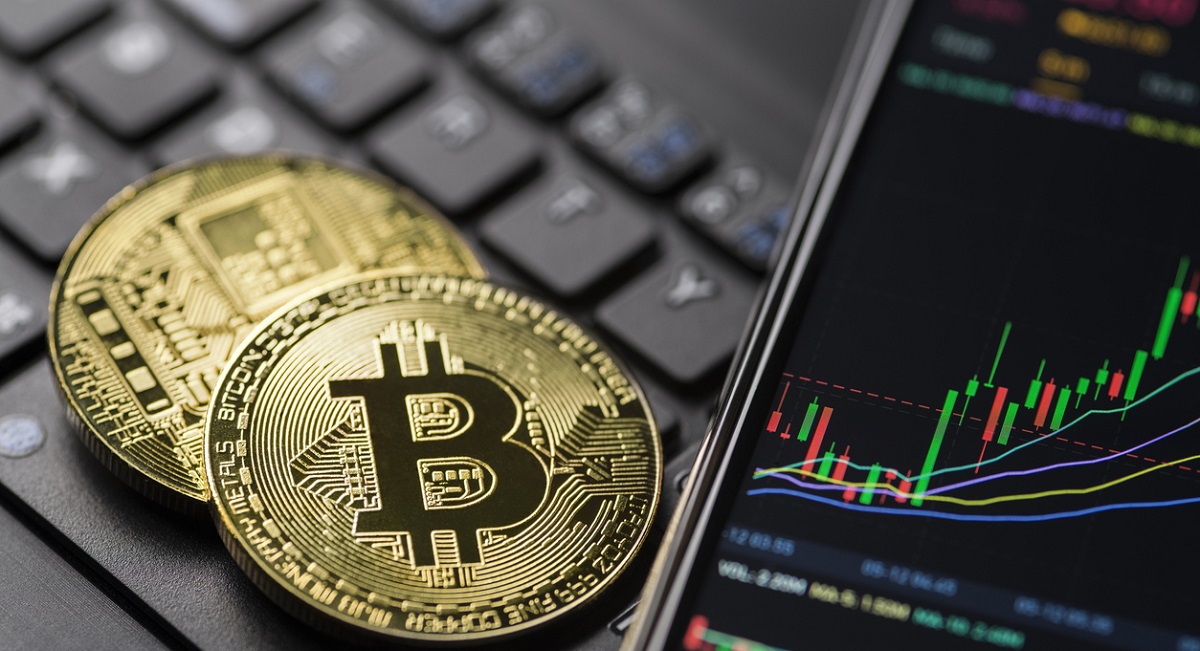Reasons to Withdraw Money from Your Trading Account
There are various reasons why you might need to withdraw money from your trading account. Whether you’re a seasoned trader or just starting out, it’s important to understand the circumstances that may prompt you to initiate a withdrawal. Here are some common reasons why traders choose to withdraw funds:
- Profit Taking: One of the main objectives of trading is to generate profits. When you have made successful trades and accumulated a substantial amount of profit, withdrawing some of those funds is often a wise decision. By taking profits, you can enjoy the fruits of your trading success and use the money for personal expenses, investments, or other financial goals.
- Emergency Situations: Life is filled with unexpected events and emergencies that require immediate access to funds. Whether it’s a medical emergency, home repair, or any other unforeseen circumstance, having the ability to withdraw money from your trading account can provide a financial safety net when you need it the most.
- Diversification: Another reason to withdraw money from your trading account is to diversify your investment portfolio. While trading can be profitable, it’s important not to put all your eggs in one basket. By withdrawing funds and investing in other assets such as real estate, stocks, or bonds, you can spread your risk and potentially achieve more balanced returns.
- Capitalizing on Investment Opportunities: The financial markets are constantly evolving, presenting new opportunities for traders. Withdrawing funds from your trading account allows you to take advantage of these opportunities as they arise. Whether it’s investing in a promising IPO or participating in a lucrative trading opportunity, having access to your trading capital can help you capture potential profits.
- Account Maintenance: Occasionally, traders may need to withdraw money for account maintenance purposes. This could include covering trading fees, transferring funds to another trading platform, or meeting any necessary account requirements. It’s important to manage your trading account effectively to ensure smooth operations.
These are just a few reasons why you might consider withdrawing money from your trading account. It’s essential to assess your specific financial goals and circumstances before making any withdrawals. Remember, the decision to withdraw funds should always align with your overall trading strategy and risk tolerance.
Choosing the Right Withdrawal Method
When it comes to withdrawing money from your trading account, choosing the right method is crucial. The availability of withdrawal options may vary depending on the trading platform or broker you’re using. Here are some factors to consider when selecting the best withdrawal method:
- Speed: The speed of the withdrawal process is an important consideration. Some methods, like electronic transfers or e-wallets, offer faster processing times compared to others, such as check or wire transfer. If you need immediate access to your funds, opt for a method that offers quick processing times.
- Security: Ensuring the security of your funds is paramount when choosing a withdrawal method. Look for reputable payment providers and platforms that use advanced encryption methods to protect your financial information. Additionally, consider using two-factor authentication or other security measures provided by your trading platform for added protection.
- Costs and Fees: Take into account the fees associated with different withdrawal methods. Some methods may have lower or no transaction fees, while others may incur significant charges. It’s important to understand the costs involved to make an informed decision.
- Availability: Check the availability of withdrawal methods in your location. Certain payment providers or withdrawal options may not be accessible in your country or region. Ensure that the method you choose is available and compatible with your location.
- User-Friendliness: Consider the ease of use and convenience of the withdrawal method. Opt for a method that you are comfortable with and that suits your preferences. Whether it’s digital platforms, bank transfers, or physical checks, choose a method that aligns with your needs.
Keep in mind that different trading platforms may offer varying withdrawal options. It’s essential to review and understand the available methods provided by your broker before making a decision. Additionally, you may need to consider any withdrawal limits or restrictions imposed by the platform.
Lastly, it’s worth noting that some trading platforms may require you to withdraw funds using the same method you used for depositing. This is done to comply with anti-money laundering regulations and ensure the security of your account. Be sure to check the withdrawal requirements and policies of your specific trading platform to avoid any inconvenience.
Understanding the Withdrawal Process
Before initiating a withdrawal from your trading account, it’s important to understand the withdrawal process. The specific steps may vary depending on your trading platform or broker, but here are the general guidelines to help you navigate the withdrawal process:
- Verification: Most trading platforms require users to complete a verification process before they can make withdrawals. This is done to ensure the security and integrity of the platform. Typically, you will need to provide identification documents and proof of address to verify your account.
- Navigate to the Withdrawal Section: Once your account is verified, log in to your trading platform and locate the withdrawal section. This can usually be found within your account settings or dashboard. Follow the instructions provided by the platform to initiate the withdrawal process.
- Choose the Amount: Specify the amount you wish to withdraw from your trading account. Ensure that you have enough funds available for withdrawal, taking into account any open positions or trading fees that might be deducted before the withdrawal.
- Select the Withdrawal Method: Choose the withdrawal method that best suits your needs and preferences. You might be prompted to enter the necessary details for the selected method, such as bank account information or e-wallet details. Provide accurate information to avoid any delays or complications.
- Review and Confirm: Review the withdrawal details carefully before confirming the transaction. Double-check the withdrawal amount, chosen method, and any associated fees. Once you are satisfied with the information, confirm the withdrawal request.
- Processing Time: The processing time for the withdrawal may vary depending on the chosen method and the policies of your trading platform. Some withdrawals are processed instantly, while others may take a few business days. Be patient and allow sufficient time for the funds to be transferred to your designated account.
- Monitor the Transaction: Keep an eye on your trading account and the destination account to ensure that the funds are successfully transferred. If you encounter any issues or delays, contact the customer support of your trading platform for assistance.
Understanding the withdrawal process is essential to ensure a smooth and hassle-free experience. Be sure to follow the instructions provided by your trading platform and pay attention to any additional requirements or steps that may be specific to the platform you are using.
Withdrawing Funds from Different Types of Trading Accounts
The process of withdrawing funds from your trading account can vary depending on the type of account you have. Whether you have a standard brokerage account, a retirement account, or a forex trading account, it’s important to understand the specific considerations for each type. Here’s an overview of withdrawing funds from different types of trading accounts:
- Standard Brokerage Account: Withdrawing funds from a standard brokerage account is relatively straightforward. Once your account is verified, you can usually initiate a withdrawal by logging into your trading platform and following the withdrawal process outlined earlier. You might have the flexibility to withdraw funds at any time, subject to any trading fees or account balance requirements.
- Retirement Account: Withdrawing funds from a retirement account, such as an Individual Retirement Account (IRA) or 401(k), comes with additional considerations. Depending on your age and the specific retirement account type, there may be penalties and tax implications for early withdrawals. It’s important to consult with a financial advisor or tax professional to understand the rules and regulations surrounding retirement account withdrawals.
- Forex Trading Account: Forex trading accounts typically follow similar withdrawal procedures as standard brokerage accounts. You can initiate a withdrawal through your forex broker’s platform, specifying the amount and chosen withdrawal method. However, it’s important to note that forex brokers may have specific requirements or restrictions on withdrawals, such as minimum withdrawal amounts or additional fees for certain payment methods. Be sure to review the terms and conditions provided by your forex broker.
- Managed Account: Managed accounts are accounts where a professional investment manager trades on your behalf. Withdrawing funds from a managed account usually requires submitting a withdrawal request to the investment manager or the company overseeing the account. The process may involve additional steps or paperwork compared to a standard brokerage account, so it’s advisable to contact the account manager or customer support for guidance.
- Cryptocurrency Trading Account: Withdrawing funds from a cryptocurrency trading account is similar to other trading accounts, with some nuances. You might need to specify a digital wallet address to receive the cryptocurrency funds. Additionally, certain cryptocurrency exchanges or platforms may have specific withdrawal limits, processing times, or fees. Familiarize yourself with the guidelines provided by your cryptocurrency exchange to ensure a smooth withdrawal process.
It’s important to familiarize yourself with the terms and conditions of your specific trading account type when it comes to withdrawing funds. Each account type may have unique considerations, restrictions, or additional requirements that you need to understand and adhere to.
Important Factors to Consider Before Withdrawing Funds
Before you proceed with withdrawing funds from your trading account, there are several important factors to consider. Taking the time to evaluate these factors can help you make informed decisions and optimize your trading experience. Here are some key considerations:
- Account Balance: Assess the current balance of your trading account. It’s crucial to ensure that you maintain a sufficient balance for future trading activities and potential market fluctuations. Consider your trading strategy and evaluate how much capital you need to have on hand to meet your objectives.
- Open Positions: Take into account any open positions you currently have in your trading account. Withdrawing funds while having open trades can potentially impact your positions and overall portfolio. Consider whether it’s a favorable time to close or manage your existing trades before initiating a withdrawal.
- Tax Implications: Understand the potential tax implications of withdrawing funds from your trading account. Depending on your jurisdiction and the type of account, withdrawals may be subject to capital gains taxes. Consult with a tax professional to ensure that you comply with the tax regulations in your specific location and to understand any reporting requirements.
- Withdrawal Limits and Fees: Be aware of any withdrawal limits imposed by your trading platform or broker. Some platforms may have minimum or maximum withdrawal limits that you need to consider. Additionally, consider any fees associated with withdrawals, such as transaction fees, foreign exchange fees, or wire transfer charges. Evaluate the costs involved to determine the most cost-effective approach.
- Financial Goals: Consider your short-term and long-term financial goals. Withdrawing funds from your trading account should align with your overall financial objectives. Evaluate whether the funds you plan to withdraw will be used for immediate expenses, investments in other assets, or diversification of your portfolio.
- Market Conditions: Assess the current state of the financial markets before withdrawing funds. Market conditions can influence asset prices, liquidity, and volatility. Timing your withdrawals in alignment with favorable market conditions can potentially optimize your overall portfolio performance.
It’s important to note that the factors to consider before withdrawing funds may vary depending on your personal circumstances, trading strategy, and the specific terms and conditions of your trading account. Take the time to evaluate these factors and make informed decisions that align with your financial goals and risk tolerance.
Taking Advantage of Withdrawal Promotions and Bonuses
When it comes to withdrawing funds from your trading account, it’s worth exploring withdrawal promotions and bonuses that may be offered by your trading platform or broker. These incentives can provide added value and enhance your overall trading experience. Here are some ways to take advantage of withdrawal promotions and bonuses:
- Bonus Programs: Some trading platforms offer bonus programs where they provide additional funds when you make a withdrawal. This can be a percentage of the withdrawn amount or a flat bonus. Take the time to research and compare the bonus programs offered by different platforms to maximize the benefits.
- Refer-a-Friend Programs: Many trading platforms have refer-a-friend programs where you earn a bonus or commission for referring new traders to the platform. When you withdraw funds, you can take advantage of these programs by inviting friends or acquaintances to join the platform using your unique referral link.
- Loyalty Rewards: Some trading platforms have loyalty programs that reward active and long-term traders. As you withdraw funds, you may qualify for higher membership tiers or unlock additional perks and benefits. Explore the loyalty rewards offered by your trading platform to make the most of your withdrawals.
- Special Promotions and Contests: Keep an eye out for special promotions and contests that your trading platform may run. These can include bonus offers, cash prizes, or exclusive rewards. Participating in such promotions can add excitement to your withdrawals and potentially boost your overall trading profits.
- Terms and Conditions: Before participating in any withdrawal promotions or bonuses, carefully review the terms and conditions. Pay attention to any eligibility criteria, minimum withdrawal amounts, and any restrictions or limitations on the bonus funds. Understanding the terms will help you make informed decisions and avoid any surprises.
Taking advantage of withdrawal promotions and bonuses can provide extra value as you withdraw funds from your trading account. These incentives can enhance your trading experience and potentially increase your overall profitability. However, it’s important to approach these promotions with caution and ensure that they align with your trading goals and strategies. Evaluate the terms and conditions, compare different offers, and make informed decisions that are in your best interest.
Common Mistakes to Avoid When Withdrawing Money from Your Trading Account
Withdrawing money from your trading account is a straightforward process, but it’s important to be aware of common mistakes that traders often make. By avoiding these pitfalls, you can ensure a smooth and hassle-free withdrawal experience. Here are some common mistakes to avoid:
- Not Understanding Withdrawal Policies: One of the biggest mistakes traders make is not fully understanding the withdrawal policies of their trading platform or broker. Each platform has its own set of rules and requirements, such as minimum withdrawal amounts, processing times, or verification procedures. Take the time to familiarize yourself with these policies to avoid unnecessary delays or complications.
- Ignoring Tax Implications: Failing to consider the tax implications of a withdrawal can be a costly mistake. Depending on your jurisdiction and the specific type of account you have, withdrawals may be subject to capital gains taxes or other tax obligations. Consult with a tax professional to ensure that you comply with tax regulations and understand any reporting requirements.
- Over-Withdrawing: It can be tempting to withdraw more funds than necessary from your trading account. However, over-withdrawing can leave you with a depleted account balance, potentially limiting your trading opportunities. Assess your financial needs and keep a sufficient balance in your trading account to support your trading activities and accommodate market fluctuations.
- Ignoring Withdrawal Fees: Some withdrawal methods or platforms may charge fees for processing withdrawals. Ignoring or failing to account for these fees can lead to unexpected reductions in your withdrawal amount. Take the time to understand the costs involved and choose withdrawal methods with reasonable fees or explore platforms that offer fee-free withdrawals.
- Reckless Timing: Timing your withdrawals without considering market conditions can be a mistake. Withdrawing funds during times of high volatility or unfavorable market conditions may result in missed trading opportunities or potential losses. Be mindful of market trends and choose appropriate withdrawal timing to optimize your trading strategy.
- Failing to Double-Check Details: Mistakes in withdrawal details can cause delays or even result in funds being sent to the wrong account. Always double-check the withdrawal amount, payment method details, and any additional information required before confirming the transaction. Paying attention to detail can prevent costly errors.
By being aware of these common mistakes and taking proactive steps to avoid them, you can ensure a smooth and successful withdrawal process from your trading account. Take the time to understand withdrawal policies, consider tax implications, and make informed decisions that align with your financial goals and risk tolerance.
Tips for Smooth and Efficient Withdrawals
When it comes to withdrawing money from your trading account, there are several tips and best practices you can follow to ensure a smooth and efficient process. By implementing these tips, you can minimize delays, avoid unnecessary complications, and optimize your overall withdrawal experience. Here are some key tips to consider:
- Plan Ahead: It’s advisable to plan your withdrawals in advance. Consider your financial needs, trading goals, and any potential market opportunities. By planning ahead, you can avoid hasty decisions or withdrawals that may not align with your strategy.
- Be Aware of Account Requirements: Familiarize yourself with the specific requirements and limitations of your trading account. This includes any minimum balance requirements, withdrawal limits, or verification procedures. Understanding these requirements will help you avoid unnecessary complications during the withdrawal process.
- Double-Check Withdrawal Details: Before finalizing a withdrawal, review the details carefully. Double-check the withdrawal amount, payment method, and any other relevant information. Verifying these details can help prevent mistakes or delays in receiving your funds.
- Consider Withdrawal Fees: Take into account any fees associated with the withdrawal method you choose. Different methods may have varying transaction fees or currency exchange costs. Consider the total costs involved and select a withdrawal method that offers reasonable fees or fee-free options.
- Follow Withdrawal Procedures: Each trading platform or broker may have specific procedures for initiating withdrawals. It’s important to follow these procedures accurately to ensure a smooth transaction. Check the platform’s website or contact customer support if you have any questions or concerns.
- Keep Communication Channels Open: Stay in touch with the customer support team of your trading platform or broker. In case of any issues or questions, reaching out to customer support can expedite the resolution process and provide you with necessary guidance.
- Monitor Your Account: Keep an eye on your trading account and the destination account where you expect to receive the funds. Monitoring the transaction can help you ensure the successful completion of the withdrawal and allow you to take prompt action in case of any unexpected issues.
- Maintain Proper Records: Keep a record of your withdrawal transactions, including the withdrawal amount, date, and any associated details. Proper recordkeeping can help you track your financial activities, support tax reporting, and provide an overview of your trading performance.
By following these tips, you can enhance the efficiency and reliability of your withdrawal process. Remember to consult the specific guidelines and policies provided by your trading platform or broker for the most accurate and up-to-date information regarding withdrawals. Implementing these tips will help ensure that your funds are transferred in a timely and hassle-free manner, allowing you to focus on your trading goals and financial objectives.
Dealing with Withdrawal Fees and Charges
When withdrawing money from your trading account, it’s important to consider any fees and charges associated with the withdrawal process. Understanding and effectively managing these fees can help you optimize your withdrawal experience and minimize unnecessary costs. Here are some tips for dealing with withdrawal fees and charges:
- Review the Fee Structure: Take the time to understand the fee structure of your trading platform or broker. Different platforms may have varying fee scales for withdrawals. Review the fee information provided by your platform to determine the specific charges associated with different withdrawal methods.
- Choose the Right Withdrawal Method: Consider the withdrawal methods available to you and their associated fees. Some methods may have lower fees or even offer fee-free withdrawals, while others may have higher charges. Assess the fees of different withdrawal methods and choose the one that offers the most cost-effective solution for your needs.
- Consolidate Withdrawals: If your trading platform charges a fixed fee per withdrawal, it can be beneficial to consolidate your withdrawals into larger sums rather than making multiple small withdrawals. By minimizing the number of transactions, you can reduce the impact of fixed fees and optimize your costs.
- Consider Currency Conversion Costs: If you are withdrawing funds in a different currency than your trading account’s base currency, be aware of the currency conversion costs that may be involved. Currency conversion fees can vary widely between platforms, so it’s important to compare the rates and charges to minimize the impact on your withdrawal amount.
- Utilize Fee-Free or Discounted Withdrawal Opportunities: Some trading platforms offer promotions or loyalty programs that provide fee-free or discounted withdrawals to their users. Keep an eye out for such opportunities and take advantage of them when available. This can help you save on withdrawal fees and charges, further maximizing your returns.
- Consider Alternative Payment Methods: Explore alternative payment methods that may have lower withdrawal fees. For example, electronic wallets or certain digital payment platforms may offer more cost-effective withdrawal options compared to traditional bank transfers or checks. Assess the available options and choose the method that aligns with your cost-saving goals.
- Factor Fees into your Trading Strategy: When planning your trades and withdrawals, consider the impact of fees on your overall profitability. Factor in the costs associated with withdrawals to ensure that they are within acceptable limits and do not significantly erode your trading returns.
By being proactive in managing withdrawal fees and charges, you can optimize your trading account and minimize unnecessary costs. Remember to stay informed about the fee structure of your trading platform, explore fee-saving opportunities, and choose withdrawal methods that align with your cost-saving goals. By doing so, you can make the most of your withdrawals and preserve more of your gains.
FAQs about Withdrawing Money from Trading Account
Withdrawing money from your trading account can sometimes raise questions and uncertainties. To help you navigate through the process, here are some frequently asked questions about withdrawing money from a trading account:
- 1. How long does it take to process a withdrawal?
- 2. Are there any withdrawal limits?
- 3. Are there any fees associated with withdrawals?
- 4. Can I withdraw funds using a different method than I used for depositing?
- 5. What documents are required for the withdrawal process?
- 6. Can I cancel or reverse a withdrawal?
The processing time for withdrawals can vary depending on several factors, including the trading platform, the chosen withdrawal method, and any verification procedures required. While some withdrawals are processed instantly, others may take a few business days to complete. It’s important to check the withdrawal processing times provided by your trading platform.
Some trading platforms impose minimum or maximum withdrawal limits, which vary depending on the platform and the chosen withdrawal method. These limits are set to ensure compliance with regulations and promote secure transactions. It’s advisable to review the withdrawal limits specific to your trading platform to ensure that your withdrawal amount falls within the allowed range.
Withdrawal fees can vary depending on the trading platform and the chosen withdrawal method. Certain platforms may charge a flat fee per withdrawal, while others may apply fees based on a percentage of the withdrawn amount. Additionally, currency conversion fees may apply if you are withdrawing funds in a different currency. It’s important to review the fee structure provided by your trading platform to understand any applicable charges.
Trading platforms typically have policies that require withdrawals to be processed using the same method used for depositing funds. This measure is put in place to prevent money laundering and ensure the security of your trading account. It’s advisable to review the withdrawal requirements of your specific trading platform to avoid any complications.
Most trading platforms require users to complete a verification process before they can make withdrawals. This is done to comply with legal and regulatory requirements. The specific documents required may vary, but commonly requested documents include identification proof (such as a passport or driver’s license) and proof of address (such as a utility bill or bank statement). It’s essential to review the documentation requirements provided by your trading platform.
Once a withdrawal request has been processed and initiated by your trading platform, it’s generally not possible to cancel or reverse the transaction. It’s crucial to review and verify the withdrawal details before confirming your request to ensure accuracy. If you have concerns or need assistance, contacting the customer support of your trading platform promptly is advisable.
If you have specific questions or concerns about the withdrawal process, it’s recommended to reach out to the customer support of your trading platform or consult the platform’s support documentation. Understanding the withdrawal policies and procedures will help you navigate through the process with confidence and clarity.

























